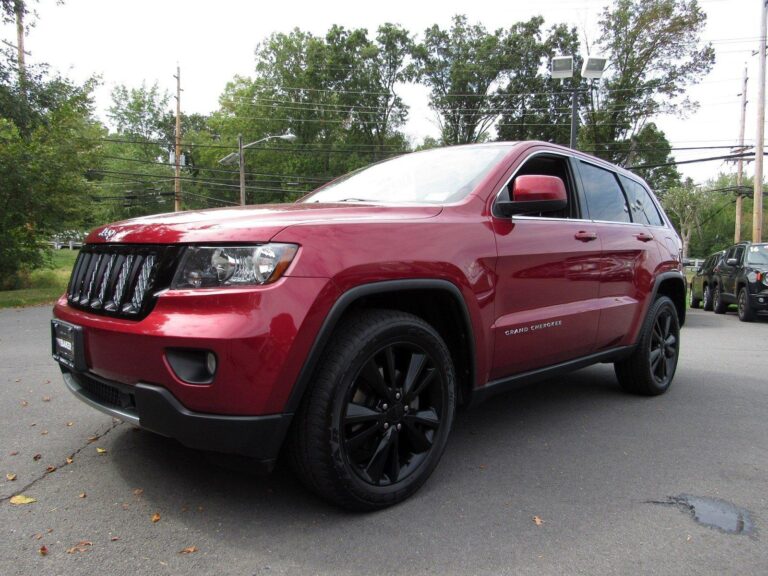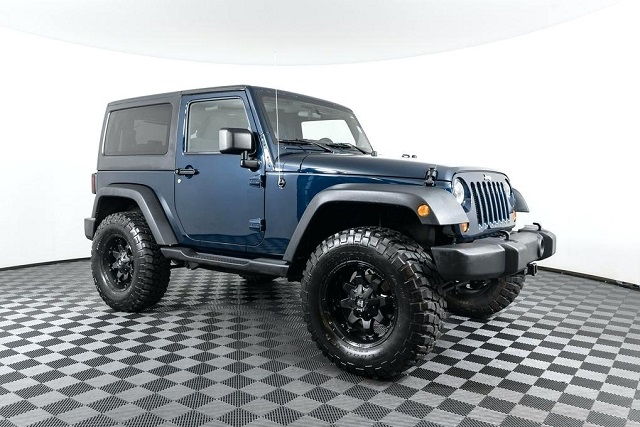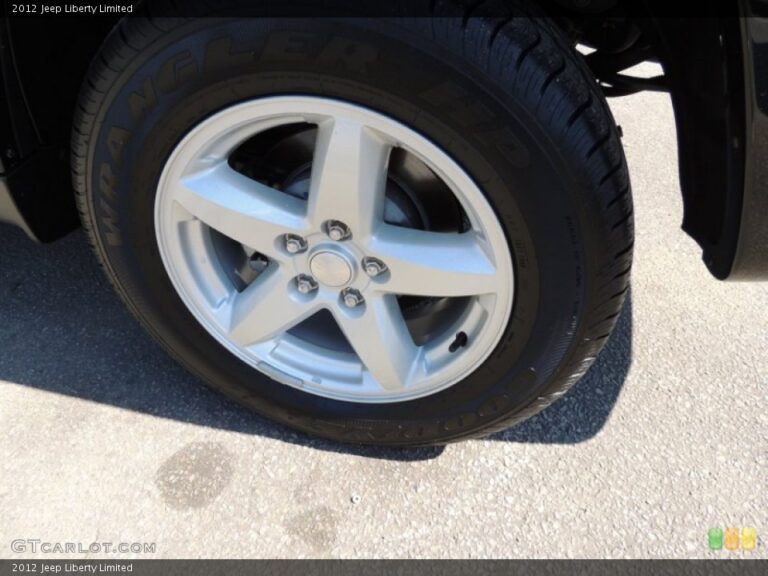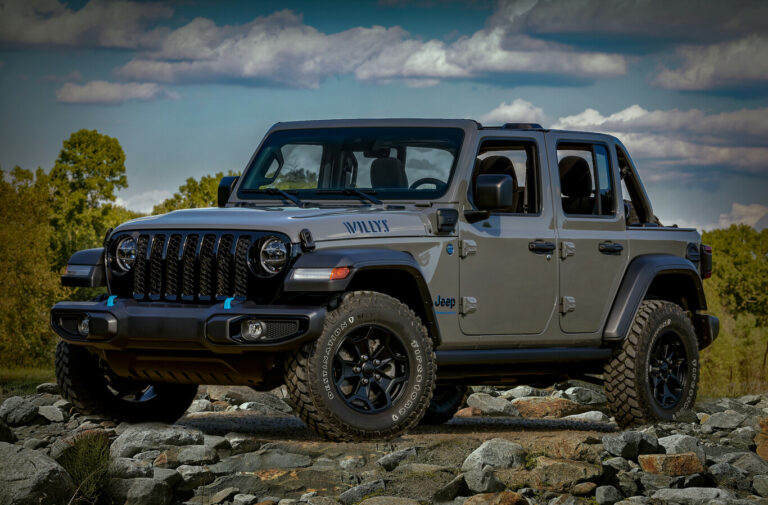1969 Jeep CJ5 For Sale: A Comprehensive Buyer’s Guide
1969 Jeep CJ5 For Sale: A Comprehensive Buyer’s Guide jeeps.truckstrend.com
The allure of a vintage vehicle is undeniable, and few classics capture the spirit of adventure and rugged capability quite like the Jeep CJ5. Specifically, the 1969 Jeep CJ5 holds a unique place in automotive history, representing a sweet spot between its utilitarian origins and the dawn of more modern iterations. For enthusiasts, off-roaders, and collectors alike, finding a 1969 Jeep CJ5 for sale isn’t just about acquiring a vehicle; it’s about owning a piece of American heritage, a testament to enduring design, and a gateway to unparalleled open-air driving experiences.
This comprehensive guide will delve into everything you need to know when considering a 1969 Jeep CJ5 for sale, from its iconic features and what to look for, to practical buying tips, ownership insights, and common questions.
1969 Jeep CJ5 For Sale: A Comprehensive Buyer’s Guide
The Enduring Appeal of the 1969 Jeep CJ5
The Civilian Jeep (CJ) series, born from the military’s robust Willys MB, quickly became a symbol of freedom and versatility. The CJ5, introduced in 1955, refined the original concept with a slightly longer wheelbase and updated styling. The 1969 model year is particularly interesting as it falls squarely within the "Kaiser-Jeep" era, before the full acquisition by AMC (American Motors Corporation) in 1970. This period saw the continued use of reliable and beloved powertrains, making the 1969 CJ5 a highly sought-after model for its blend of classic aesthetics and solid mechanicals.
Its enduring appeal stems from several factors:
- Iconic Design: The classic round headlights, flat fenders, and compact stature are instantly recognizable and timeless.
- Off-Road Prowess: Engineered for rough terrain, the CJ5’s short wheelbase and robust 4×4 system make it incredibly capable off-pavement.
- Simplicity and Durability: Built with straightforward mechanicals, the CJ5 is relatively easy to maintain and repair, fostering a strong DIY culture among owners.
- Nostalgia and Collectibility: For many, the 1969 CJ5 evokes a sense of simpler times, representing adventure and the open road, making it a valuable collector’s item and a rewarding restoration project.

Whether you envision it as a weekend cruiser, a trail rig, or a showpiece, the 1969 Jeep CJ5 offers a unique blend of utility, history, and pure driving enjoyment.
Key Features and Specifications of a 1969 CJ5
Understanding the core components of a 1969 CJ5 is crucial before you start your search. While modifications are common, knowing the original specifications helps in evaluating a vehicle’s condition and authenticity.
Common Powertrain Options:

- Engine:
- Hurricane F-134 I4: The venerable 134 cubic inch (2.2L) inline-four was a carryover from earlier CJs, known for its reliability and low-end torque. It’s not a powerhouse, but it’s incredibly durable and fuel-efficient for its era.
- Dauntless V6 225: Introduced in the mid-60s, this 225 cubic inch (3.7L) V6 engine provided significantly more power (160 hp) and torque than the F-134, making it a popular choice for those seeking more performance on and off-road. Its distinctive "odd-fire" design gives it a unique sound.

- Transmission:
- T-90 3-speed Manual: Often paired with the F-134, a robust and simple manual transmission.
- T-86 3-speed Manual: More commonly found with the Dauntless V6, offering slightly different gear ratios.
- Transfer Case:
- Dana 18: A legendary gear-driven transfer case known for its strength and reliability, providing 2WD high, 4WD high, and 4WD low ranges.
- Axles:
- Front: Dana 27 (typically)
- Rear: Dana 44 (common with V6), or sometimes a Dana 27 with the I4. The Dana 44 is generally more desirable for its strength.
Chassis and Body:
- Frame: Ladder frame construction, known for its strength.
- Suspension: Leaf springs all around, providing a robust but somewhat stiff ride.
- Brakes: Four-wheel drum brakes were standard, offering adequate stopping power for the period but often upgraded to disc brakes in modified vehicles.
- Body: Steel body tub, fenders, hood, and grille. The open-top design is a hallmark, with various soft top and bikini top options available, and occasionally a rare factory hardtop.
- Dimensions: Approximately 133 inches long, 68 inches wide, and a wheelbase of 81 inches, making it compact and agile.
What to Look For When Buying a 1969 Jeep CJ5 (Important Considerations)
When a 1969 Jeep CJ5 is for sale, a thorough inspection is paramount. These vehicles are over 50 years old, and their condition can vary wildly.
-
Rust, Rust, Rust: This is the number one enemy of vintage Jeeps.
- Frame: Inspect the entire frame for cracks, bends, and especially rust perforation. Pay close attention to the areas around the spring hangers, transmission crossmember, and rear shackle mounts.
- Body Tub: Check the floorboards (especially under the seats and footwells), hat channels (supports under the floor), fenders, cowl, and tailgate. Rust can hide under floor mats or painted surfaces.
- Grille and Windshield Frame: Common areas for corrosion.
- Solutions: Minor surface rust can be addressed, but significant frame or body tub rust often requires costly repairs or full panel replacement. Aftermarket replacement tubs are available.
-
Engine Condition:
- Leaks: Look for oil, coolant, or fuel leaks.
- Start-up: Listen for abnormal noises (knocks, rattles, excessive smoke). A well-maintained engine should start relatively easily.
- Compression: If possible, perform a compression test to assess internal engine health.
- Modifications: Be aware of engine swaps. While a V8 conversion can add power, ensure it was done professionally and doesn’t compromise the chassis.
-
Drivetrain (Transmission, Transfer Case, Axles):
- Transmission: Check for smooth shifting through all gears. Listen for grinding or whining noises.
- Transfer Case: Ensure it shifts into 2WD high, 4WD high, and 4WD low without excessive force or grinding. Look for leaks.
- Axles: Check for leaks at the differential covers and axle shafts. Listen for abnormal noises during driving, which could indicate worn gears or bearings.
-
Suspension and Steering:
- Leaf Springs/Shocks: Look for worn bushings, cracked springs, or leaking shocks.
- Steering: Check for excessive play in the steering wheel. Inspect tie rods, drag link, and steering box for wear or leaks. Many CJ5s lack power steering, so a heavy steering feel is normal.
-
Brakes:
- Effectiveness: Test the brakes thoroughly. They should feel firm and stop the vehicle straight.
- Leaks: Check brake lines and wheel cylinders for leaks.
- Upgrades: Disc brake conversions are a common and highly recommended safety upgrade.
-
Electrical System:
- Test all lights (headlights, tail lights, turn signals), wipers, gauges, and horn. Electrical issues can be notoriously frustrating in older vehicles.
-
Documentation:
- Verify the VIN (Vehicle Identification Number) matches the title.
- Look for maintenance records, restoration receipts, or any history that can shed light on the vehicle’s past.
The Buying Process: Tips for Finding Your 1969 CJ5
Finding the right 1969 Jeep CJ5 for sale requires patience and a strategic approach.
-
Where to Look:
- Online Marketplaces: eBay Motors, Hemmings, Bring a Trailer (for higher-end examples), Craigslist, and Facebook Marketplace are popular. Be wary of scams and always verify sellers.
- Specialty Forums & Clubs: Jeep forums (e.g., CJ-2A/3A/5/7 Owners Forums) and local 4×4 clubs are excellent resources, often listing vehicles from trusted enthusiasts.
- Classic Car Dealerships: Some specialize in vintage 4x4s, offering higher prices but potentially more thoroughly vetted vehicles.
- Auctions: Live or online auctions can yield good deals, but require quick decision-making and often "as-is" sales.
-
Setting a Budget: Beyond the purchase price, factor in:
- Restoration/Repair Costs: Almost every vintage vehicle will need some work. Be realistic.
- Insurance: Classic car insurance is often affordable but requires specific criteria.
- Maintenance: Regular upkeep, fluids, and potential parts replacement.
- Modifications: If you plan on upgrading, budget accordingly.
-
Negotiation Tips:
- Be Informed: Use your inspection findings to justify a lower offer if there are issues.
- Don’t Rush: There will always be another CJ5. Don’t feel pressured to buy.
- Cash is King: A cash offer can often give you leverage.
- Pre-Purchase Inspection (PPI): Always, always, always get a PPI from a reputable mechanic specializing in vintage vehicles or 4x4s. This small investment can save you thousands.
-
Test Drive:
- Listen for unusual noises.
- Check braking, steering response, and clutch engagement.
- If possible, test 4WD high and low ranges in a safe environment.
- Observe gauges for proper function and temperature.
Ownership and Maintenance: Keeping Your Classic Alive
Owning a 1969 Jeep CJ5 is a rewarding experience, but it comes with responsibilities.
- Routine Maintenance: Like any vehicle, regular oil changes, fluid checks (transmission, transfer case, differentials), and greasing of chassis components are essential.
- Parts Availability: Fortunately, due to the CJ’s long production run and popularity, parts availability for mechanical components is generally good. Many aftermarket suppliers specialize in CJ parts. Body panels can be trickier, but reproduction tubs and panels are available.
- Restoration vs. Preservation: Decide on your goal. Are you aiming for a concourse-level restoration, a reliable driver, or a rugged trail rig? This will dictate your budget and effort.
- Driving Experience: Be prepared for a raw driving experience. No power steering or brakes, a bouncier ride due to leaf springs, and less creature comforts than modern vehicles. Embrace it as part of the charm!
- Safety: Vintage Jeeps lack modern safety features like airbags, ABS, or crumple zones. Drive defensively and consider upgrading seatbelts.
Challenges and Solutions
While the 1969 CJ5 is robust, owning an older vehicle presents specific challenges.
- Rust:
- Solution: Prevention is key (keep it dry, wash off salt/mud). For existing rust, cut out and weld in new metal. Replacement body tubs are a significant but effective solution for severely rusted bodies.
- Lack of Modern Comforts:
- Solution: Aftermarket seats, sound deadening materials, and a quality soft top can improve comfort. Heater upgrades are also common.
- Limited Performance/Safety (Stock):
- Solution: Engine swaps (V8, modern inline-4/V6) for more power. Disc brake conversions dramatically improve stopping power. Upgrading steering components can reduce wandering. Roll cages are a vital safety addition for off-road use.
- Fuel Economy:
- Solution: It’s a classic Jeep, so don’t expect Prius-like mileage. The F-134 is more efficient than the V6, but neither is a gas sipper. Embrace the character, not the MPG.
1969 Jeep CJ5 For Sale: Estimated Price Guide
The price of a 1969 Jeep CJ5 can vary dramatically based on its condition, originality, engine type, and modifications. This table provides a general range.
| Condition Category | Description | Estimated Price Range (USD) |
|---|---|---|
| Parts/Project Vehicle | Severely rusted, non-running, incomplete, or requiring extensive mechanical and body work. | $2,000 – $7,000 |
| Fair Condition | Running and driving, but significant rust issues, mechanical problems (e.g., worn engine, transmission issues), or extensive cosmetic flaws. | $7,000 – $15,000 |
| Good Driver | Solid frame, minimal rust, mechanically sound (running well, shifting smoothly), presentable exterior but not perfect. May have some tasteful modifications. | $15,000 – $28,000 |
| Excellent/Restored | Near-original or professionally restored to a high standard. Minimal to no rust, perfect mechanicals, show-quality paint and interior. Often with Dauntless V6. | $28,000 – $45,000+ |
Note: Prices can fluctuate based on market demand, location, specific modifications, and historical significance (e.g., a rare factory option or documented history).
Frequently Asked Questions (FAQ) About the 1969 Jeep CJ5
Q1: How much does a 1969 CJ5 typically cost?
A1: As detailed in the price guide above, prices range from a few thousand dollars for a project vehicle to over $45,000 for a professionally restored example. The average "good driver" falls in the $15,000 – $28,000 range.
Q2: Is the 1969 CJ5 a good daily driver?
A2: Generally, no. While capable, the 1969 CJ5 lacks modern safety features, comfort, and performance for highway speeds or daily commuting. It’s best suited as a weekend vehicle, off-road toy, or classic car enthusiast’s pleasure vehicle.
Q3: What’s the main difference between the F-134 I4 and Dauntless V6 engines?
A3: The F-134 I4 is the original "Go-Devil" engine, known for its extreme durability and torque at low RPMs, but limited horsepower. The Dauntless V6 offers significantly more horsepower (160 hp vs. 75 hp for the I4) and torque, making it a much more capable engine for general driving and off-roading.
Q4: Are parts hard to find for a 1969 CJ5?
A4: Surprisingly, no. Due to the CJ’s long production run (the CJ5 was made until 1983) and its popularity, most mechanical parts are readily available through aftermarket suppliers and online retailers specializing in vintage Jeep parts. Body panels and specific trim pieces might require more searching.
Q5: What are common modifications done to CJ5s?
A5: Popular modifications include engine swaps (often to a small block V8 or more modern Jeep engines), disc brake conversions, power steering upgrades, suspension lifts, larger tires, aftermarket roll cages, and various interior comfort improvements.
Q6: Can I put a hardtop on a 1969 CJ5?
A6: Yes, factory hardtops were available, though rare. Aftermarket fiberglass hardtops are also available, and soft tops are a common and versatile option.
Q7: What should I prioritize when looking for a 1969 CJ5 for sale?
A7: Prioritize a solid, rust-free frame. Body rust is repairable, but a compromised frame is a major undertaking. After that, focus on a strong engine and functional drivetrain. Cosmetics can be addressed later.
Conclusion
The 1969 Jeep CJ5 stands as a testament to automotive simplicity, rugged design, and timeless appeal. For those seeking a unique driving experience, a capable off-road companion, or a rewarding restoration project, a 1969 Jeep CJ5 for sale offers an unparalleled opportunity. By understanding its key features, knowing what to look for during inspection, and approaching the buying process with careful consideration, you can confidently acquire a piece of automotive history that promises countless adventures and a connection to the enduring spirit of the Jeep brand. Owning a ’69 CJ5 isn’t just about having a vehicle; it’s about embracing a lifestyle.





